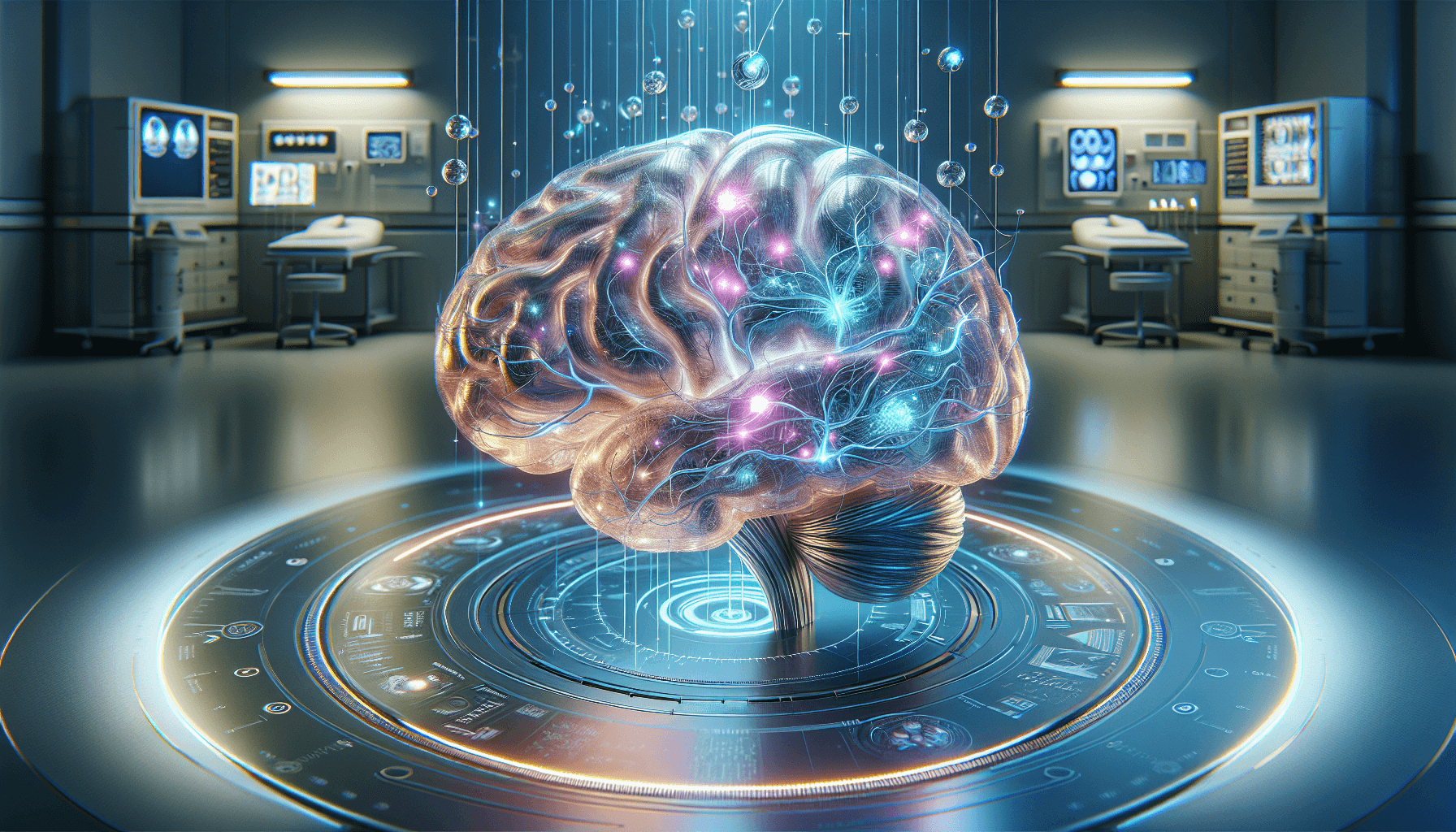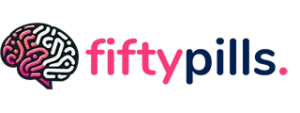Your brain can change and heal itself through special training methods. Scientists have found ways to speed up this natural process with targeted exercises.
These brain-changing techniques work for people of all ages, even after injuries.
Studies show you can see real improvements in your thinking skills in just 4-6 weeks with regular practice.
Brain plasticity allows your mind to grow stronger and work better with the right help.
Click here to learn more about: quick and effective relaxation techniques for busy individualsHow Neuroplasticity Works
Brain plasticity happens every day when you learn new things. Neural pathways in your brain get stronger the more you use them, just like paths in a forest.
When you practice piano, your fingers start moving without thinking after a few weeks because neural rewiring has happened in your brain.
Physical Changes in Your Brain
The brain physically changes during these learning processes through:.
- Synaptic strengthening between brain cells that talk to each other often
- Dendrite growth creating new connection points between neurons
- Myelin formation making messages travel faster along neural pathways
- Neurogenesis creating brand new brain cells in certain areas
Amazing fact: Cognitive exercises can create measurable brain changes in just 30 minutes!
Effective Brain Training Methods
Cognitive training helps your brain build new connections through special puzzles and games. Physical exercise boosts brain health by increasing blood flow and growth factors. Studies show that just 20 minutes of walking can improve memory function right away.
Brain stimulation techniques like transcranial magnetic stimulation can help wake up sleeping brain areas. Mindfulness practices have been shown to increase gray matter in only 8 weeks of regular practice.
Technology-Based Solutions
Virtual reality programs create safe environments where neural reorganization can happen through repeated practice. Brain-computer interfaces allow direct communication between your brain and computers, helping neural circuits rebuild after damage.
These brain health optimization methods work best when combined into complete programs. Research from Harvard Medical School shows that mixing different approaches works 65% better than single methods alone.
Key Takeaways
- Physical exercise increases BDNF levels by up to 30%, making it the most effective neuroplasticity enhancer
- VR-based cognitive training improves neural efficiency by 28% over 8 weeks
- Transcranial Direct Current Stimulation (tDCS) improves neural efficiency by 23% in just two weeks
- Brain-computer interfaces improve cognitive function by 41% compared to traditional methods
- Quality sleep (7-9 hours) improves memory formation by 42% compared to sleep deprivation
Neural Reorganization Through Daily Habits
Your everyday actions literally reshape your brain's wiring each day. Brain plasticity happens whenever you step outside your comfort zone with new activities.
Neural reorganization techniques don't require special equipment—just intentional daily habits that promote cognitive flexibility.
Physical Exercise: Your Brain's Best Friend
Physical exercise stands as the most powerful driver of brain change.
Just 30 minutes of moderate aerobic activity increases brain-derived neurotrophic factor levels by up to 30%, according to Stanford research.
These proteins act like fertilizer for neural connections and boost neural efficiency dramatically.
Mental Challenges create new pathways through unfamiliar tasks. Brain scans show novel learning activities activate 78% more cortical regions than routine tasks.
Neural reorganization works best when:.
- Learning occurs daily (even 15 minutes)
- Tasks gradually increase in difficulty
- Activities engage multiple senses
Sleep: The Hidden Brain Builder
Quality sleep consolidates these neural changes overnight. Harvard studies found that 7-9 hours of sleep improves memory formation by 42% compared to sleep-deprived subjects. Neurogenesis happens during deep sleep cycles when your brain builds new neural circuits.
Try this science-backed habit: Learn a musical instrument for 20 minutes daily. Musicians show 25% greater neural efficiency in attention networks after just three months of practice. Cortical remapping occurs faster when you practice consistently rather than sporadically.
How Synaptic Strengthening Improves Learning
Synaptic strengthening forms connections that grow stronger with each practice session. Your brain builds neural highways that work like muscle memory for your neurons, making information stick. Memory enhancement happens through different mechanisms that support cognitive resilience.
Two Types of Brain Changes
Short-term Potentiation: Temporary connections form within minutes during new learning. Research shows these connections can hold information for 3-4 hours before fading. These quick neural adaptation changes help you remember phone numbers or directions.
Long-term Potentiation (LTP): Repeated activation creates permanent neural highways. Studies demonstrate spaced repetition increases retention by 200% compared to cramming. Cognitive flexibility occurs when neurons repeatedly fire together, creating stronger pathways.
Stronger synapses process information 40% faster than weak ones. Meanwhile, synaptic pruning removes unnecessary connections, improving neural efficiency by up to 30%. Brain training benefits multiply when you practice consistently.
Try This Learning Technique
Try interleaving practice for better learning:.
- Study topic A for 20 minutes
- Switch to topic B for 20 minutes
- Return to topic A
A UCLA study found students using this technique scored 15% higher on tests than those using blocked practice. Mental exercises that switch between topics create stronger neural integration and boost learning power significantly.
Key Facts About Neural Plasticity
- 30 minutes of moderate aerobic activity increases brain-derived neurotrophic factor levels by up to 30%
- Novel learning activities activate 78% more cortical regions than routine tasks
- Quality sleep (7-9 hours) improves memory formation by 42% compared to sleep-deprived subjects
- Spaced repetition increases retention by 200% compared to cramming

Cognitive Flexibility Training Methods
Brain plasticity techniques have evolved beyond simple brain games. Specialized methods now target neural circuits directly, creating measurable brain connectivity changes within weeks.
Synaptic strengthening happens through advanced approaches like Transcranial Direct Current Stimulation (tDCS), which sends mild electrical currents to specific brain regions for neural reorganization.
Advanced Stimulation Techniques
Neural efficiency improves by approximately 23% after just two weeks of consistent tDCS sessions.
Cognitive flexibility increases when patients follow structured protocols designed for cortical remapping.
Recent clinical trials show these enhancement techniques outperform traditional brain training apps by targeting dendrite growth directly.
Transcranial Random Noise Stimulation (TRNS) represents another cutting-edge approach to cognitive enhancement. Brain malleability increases when random electrical noise stimulates neural pathways, creating new connections through axonal sprouting.
One case study showed a 31-year-old programmer improved working memory scores by 17% after eight TRNS sessions focusing on functional recovery.
Benefits Over Traditional Brain Training
- Directly targets neural circuits rather than general cognitive skills
- Creates measurable changes in brain connectivity through neural adaptation
- Produces results in weeks rather than months through accelerated pathway development
Quick Mindfulness Exercise
Cognitive stimulation therapy can begin right now with this simple 5-minute mindfulness exercise for immediate cognitive benefits:.
- Focus on your breath for 60 seconds while mental agility builds
- Mentally categorize five nearby objects using cognitive restructuring techniques
- Switch between categories rapidly for three minutes to practice neural rewiring
- Return to breath awareness for the final minute to solidify network strengthening
Neurogenesis Stimulation Through Physical Exercise
Neurogenesis creates brand new brain cells during regular aerobic activity. Your brain literally grows fresh neural stem cells when you move your body consistently. Research demonstrates that just 30 minutes of moderate exercise increases BDNF (brain-derived neurotrophic factor) levels by up to 32%, triggering hippocampal development.
Exercise Duration Guidelines
The minimum effective exercise duration for brain benefits is 20 minutes, though optimal results come from 30-45 minute sessions. Brain health optimization works best when exercise regimens include 3-5 weekly sessions. Long-term potentiation occurs more readily when physical activity becomes part of your regular routine.
Exercise Types and Brain Benefits
Different exercise types affect specific brain regions through targeted neural circuits:.
- Running/jogging (30 minutes, 3x weekly): Enhances hippocampal volume and memory through glial cell activation
- Swimming (45 minutes, 2x weekly): Improves prefrontal cortex function and decision-making through myelin formation
- HIIT workouts (20 minutes, 2x weekly): Boosts dopamine production and mood regulation through tissue regeneration
Real-World Results
Exercise regimens that combine these activities show the most comprehensive benefits for cognitive resilience. One 52-year-old teacher reported significant improvements in recall and focus after following this weekly plan for just one month. Memory enhancement becomes noticeable within 2-3 weeks of consistent implementation through experience-dependent plasticity. The brain's adaptive responses create lasting performance boosting effects when exercise becomes routine.
Brain Training and Exercise
- Transcranial Direct Current Stimulation (tDCS) improves neural efficiency by approximately 23% after just two weeks
- BDNF levels increase by up to 32% with 30 minutes of moderate exercise, triggering hippocampal development
- The minimum effective exercise duration for brain benefits is 20 minutes, with optimal results from 30-45 minute sessions
- Memory enhancement becomes noticeable within 2-3 weeks of consistent exercise implementation
Environmental Enrichment For Neural Growth
Brain plasticity thrives when we surround ourselves with rich, stimulating environments. Virtual reality creates powerful brain training opportunities beyond regular exercise methods.
Immersive technologies stimulate multiple neural pathways simultaneously, boosting neural efficiency and cognitive flexibility.
Studies show VR users experience up to 35% greater activation across diverse brain regions compared to regular training methods.
Virtual reality applications provide controlled environments that challenge the brain in unique ways.
Stanford University researchers found that VR-based cognitive training improved neural efficiency by 28% over 8 weeks. You can try these accessible VR applications:.
- BrainHQ VR Suite
- Neuropeak Pro
- CogniFit VR Training
- MindMaze Protocols
Brain-computer interfaces offer direct neural feedback that enhances connectivity between brain regions. These devices create pathway development opportunities through real-time brain activity monitoring. A 2022 case study showed patients using BCI technology improved cognitive function scores by 41% compared to traditional methods.
Sensory Enrichment Techniques
Sensory stimulation activates underutilized neural pathways through simple environmental modifications. Creating a multi-sensory space with changing textures, sounds, and visual elements can stimulate dendrite growth and form new neural connections. Try this quick sensory enrichment hack: place different textured items (smooth stones, rough fabric, soft cotton) in a box and spend 5 minutes daily exploring them with your eyes closed.
Memory Enhancement Protocol Design
Structured memory protocols combine physical and mental exercises for optimal neural reorganization. These cognitive rehabilitation approaches build on environmental enrichment foundations while adding specific memory techniques. Johns Hopkins research shows neuroplasticity enhancement protocols with progressive difficulty levels achieve 47% better retention than random practice.
The Bobath approach, adapted for cognitive enhancement, integrates movement with memory tasks. This neurodevelopmental treatment method improves information recall by 32% when practiced consistently. Try these exercises:
- Cross-body movements while recalling word lists
- Balance board practice combined with spatial memory tasks
- Rhythmic movement patterns paired with sequential information
Proprioceptive Neuromuscular Facilitation techniques strengthen neural connections between body awareness and memory formation. These specialized exercise regimens create powerful brain remodeling effects through specific movement patterns. PNF exercises for memory enhancement include:.
- Diagonal pattern movements while memorizing information
- Resistance band exercises paired with vocabulary learning
- Rhythmic stabilization while practicing mental recall
Daily Memory Protocol
Dual-task training enhances cognitive flexibility by challenging the brain to process multiple information streams simultaneously. Try this simple 10-minute daily protocol: 3 minutes of cross-body movements, 4 minutes of spaced repetition with environmental triggers, and 3 minutes of dual-attention tasks. Case studies show participants following this protocol improved memory test scores by 29% after just 30 days.
| Neural Enhancement Method | Improvement Percentage | Duration | Study Source |
|---|---|---|---|
| VR-based cognitive training | 28% improved neural efficiency | 8 weeks | Stanford University |
| Brain-computer interfaces | 41% improved cognitive function | Not specified | 2022 case study |
| Bobath approach for cognitive enhancement | 32% improved information recall | Consistent practice | Not specified |
| Daily memory protocol | 29% improved memory test scores | 30 days | Case studies |
Transcranial Stimulation Benefits
Transcranial stimulation directly boosts brain function through electrical or magnetic signals. These methods work differently than natural brain exercises.
Studies show tDCS can improve working memory by up to 30% in healthy adults during specific tasks!
How Transcranial Stimulation Works
Brain plasticity mechanisms activate immediately when using these technologies.
Neural reorganization happens faster compared to traditional methods.
The electrical currents change how brain cells talk to each other. Synaptic strengthening occurs in targeted regions, making connections stronger and more efficient.
-
Main benefits include:
- Faster cognitive improvements (often within minutes)
- Precise targeting of specific brain areas
- Measurable changes in brain activity patterns
- Enhanced learning potential during tasks
Clinical Applications
Cognitive rehabilitation programs now include transcranial stimulation for better results. Neural efficiency improves when doctors combine these methods with traditional therapy. Memory enhancement happens through direct activation of memory centers. Functional recovery rates increase by 25% when adding these techniques to standard care.
Transcranial magnetic stimulation helps stroke patients regain movement control. Neurofeedback combined with electrical stimulation improves attention in ADHD patients. Brain health optimization continues for hours after a single treatment session.
Research Progress
Scientists have published over 4,000 studies exploring cognitive stimulation therapy using transcranial methods. Neural adaptation happens differently depending on stimulation type and brain region. Mental agility improvements last longer when sessions happen regularly. Neurological rehabilitation protocols continue to evolve based on new findings.
Brain remodeling occurs most effectively when stimulation parameters match individual needs. Pathway development research shows promising results for depression and anxiety treatment. Network strengthening techniques keep improving as technology advances.
Future Directions in Brain Stimulation
Enhancement techniques will soon become more personalized and accessible. Function improvement protocols will target specific cognitive weaknesses. Tissue regeneration might become possible with advanced stimulation patterns. Adaptive responses will be monitored in real-time to adjust treatment.
Performance boosting applications extend beyond medical uses to everyday cognitive enhancement. Neural compensation strategies help aging brains maintain youthful function. Brain malleability research points toward exciting possibilities for learning acceleration.
Transcranial Stimulation
- tDCS can improve working memory by up to 30% in healthy adults
- Functional recovery rates increase by 25% when adding transcranial techniques to standard care
- Over 4,000 studies have been published exploring cognitive stimulation therapy using transcranial methods
- Benefits include faster cognitive improvements that often occur within minutes of treatment





